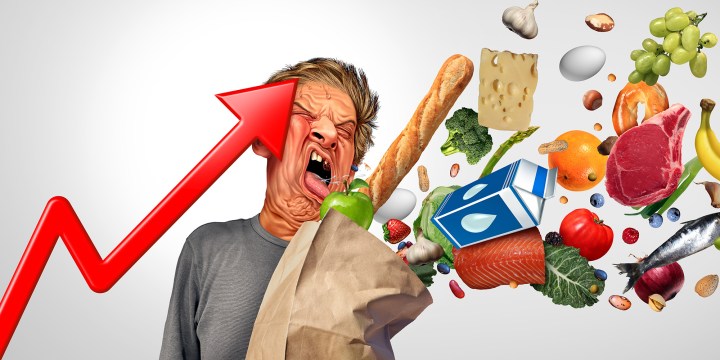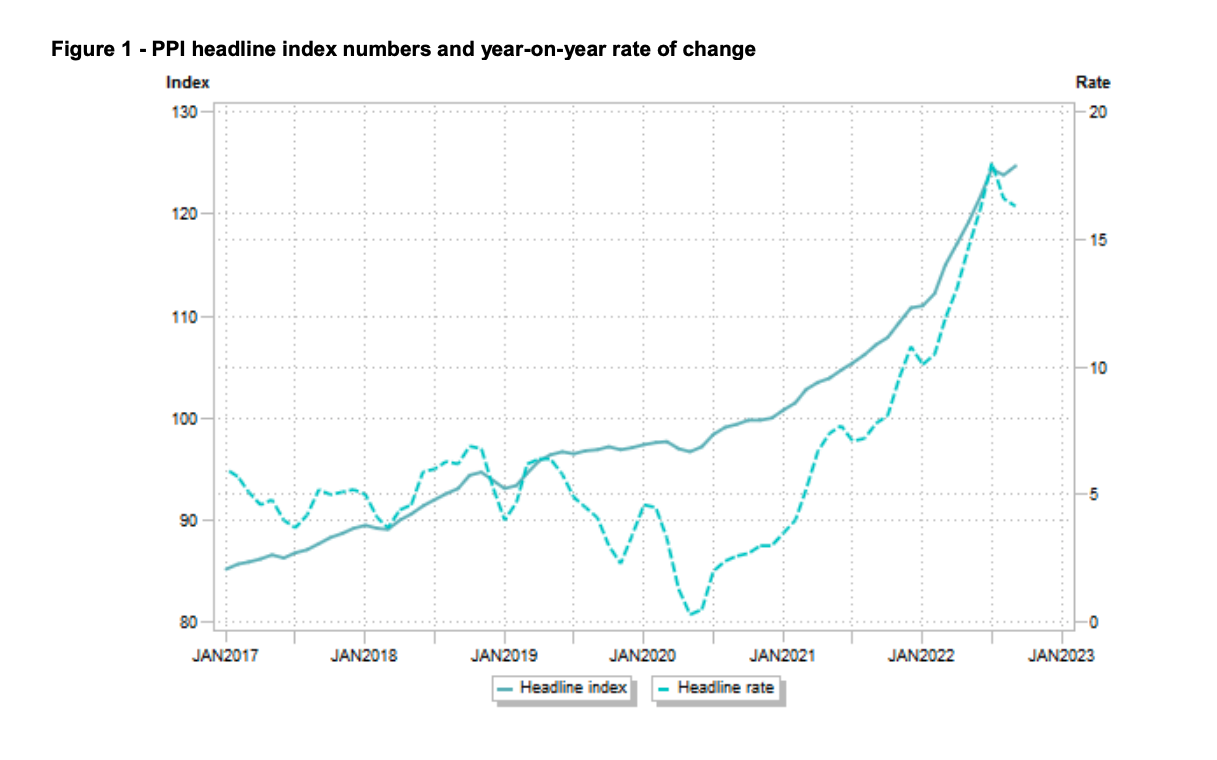ECONOMIC OUTLOOK
SA factory gate price inflation eases to 16.3% in year to September, but cost-of-living crisis persists

South Africa’s Producer Price Index slowed to 16.3% in September from 16.6% in August, Statistics South Africa said on Thursday. That’s good news, but food and fuel inflation is still taking a huge toll.
The September Producer Price Index (PPI) read is the latest sign that inflation in South Africa is ebbing from its July peaks – a welcome development indeed.
The headline PPI number braked on an annual basis in September to 16.3% from 16.6% in August.
Factory gate inflation raced to a 14-year high in the year to July, so price pressures are abating.
Consumer inflation has also been slowing, easing to 7.5% in September from 7.6% in August, after reaching a 13-year high of 7.8% in July.
But South Africa, with an unemployment rate of over 33% and an economy that is probably contracting, remains caught in the stagflationary vice of a cost-of-living crisis that is taking its greatest toll on the poor and working class.
“Coke, petroleum, chemical, rubber and plastic products increased by 34.2% year on year,” Stats SA said.
Producer food product inflation in September was 16.4%, an acceleration from 15.4% in August. Consumer food inflation was 12.3% in September compared with 11.3% in August.
Visit Daily Maverick’s home page for more news, analysis and investigations
This goes against the grain of global food price trends, which remain worryingly elevated, but have been trending lower.
For example, the food price index compiled by the US’s Food and Agriculture Organisation declined in October for the sixth consecutive month in October.
The South African Reserve Bank, which is widely expected to hike rates again next month in a move that will take the prime lending rate back into double-digit territory, has pointedly made note of this state of affairs in recent pronouncements.
The bottom line is that inflation is still eroding household incomes, and easing price pressures are mostly a response to slowing global economic growth, which is hardly good news for South Africa’s ramshackle economy.
The rand/dollar exchange rate remains pivotal in this drama.
The currency got a boost from Wednesday’s Medium-Term Budget Policy Statement, with its commitment to reducing debt being welcomed by markets, even if the task remains arduous in an economy with a dismal growth outlook.
The rand moved from over 18.20/dollar to below 18 on Wednesday, but weakened again to above 18 on Thursday.
A stronger rand is needed to contain fuel and other import costs, and if it were to fall out of bed, the inflation picture would quickly darken.
Brent crude prices remain well off their 2022 peaks at around $90 a barrel, but this is partly a response to the sour global economy.
South Africa is kind of caught in a lose-lose inflationary situation at the moment. Inflation needs to moderate, but the reasons behind moderation generally bode ill for economic growth and job creation. DM/BM


















 Become an Insider
Become an Insider
Comments - Please login in order to comment.